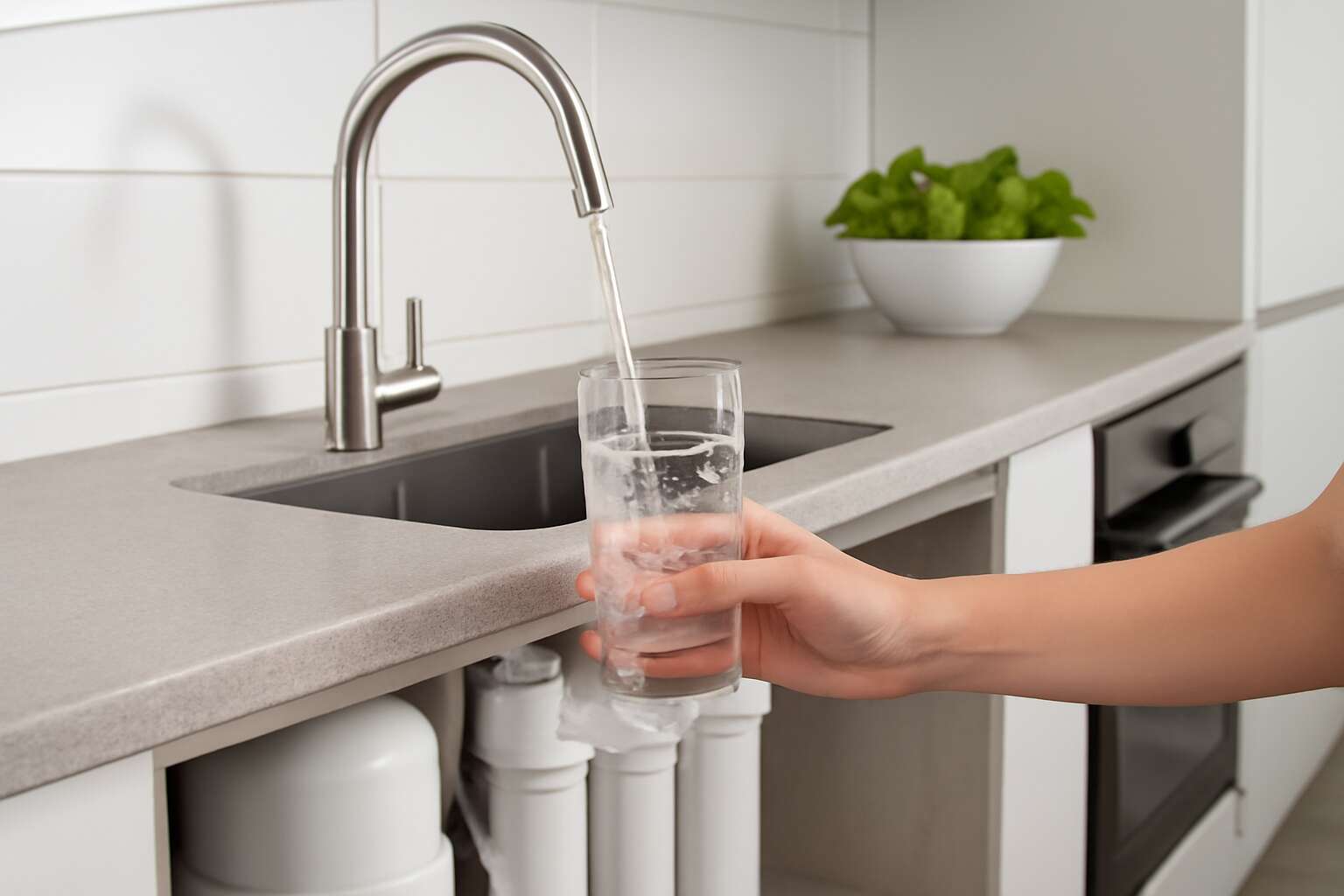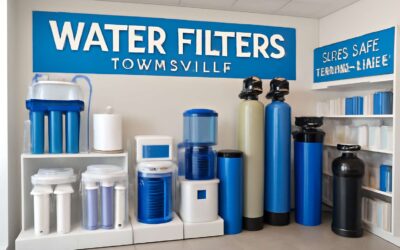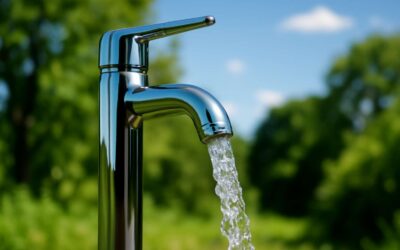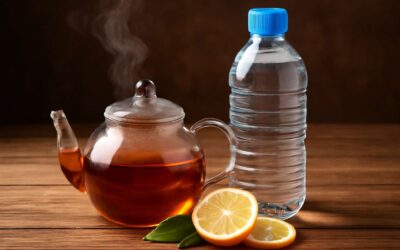Choosing the Best Water Supplier for Your Home
Understanding Different Types of Water Suppliers – Public Utilities vs. Private Water Providers
Choosing the ideal water supplier home might seem as straightforward as turning on the tap, but behind the scenes, a battle of titans unfolds—public utilities versus private water providers. Interestingly, in South Africa, about 84% of households receive water from public utilities, which are often seen as the reliable, albeit bureaucratic, giants of water delivery. However, private water providers are gaining ground, especially in niche markets, offering tailored solutions and sometimes faster service.
Understanding the differences between these two types of water suppliers is crucial for homeowners. Public utilities tend to operate under government oversight, ensuring affordability and widespread coverage but occasionally facing issues like infrastructure delays. Private water providers, on the other hand, may charge a premium but often come with perks like personalized customer care and innovative water management.
- Public Utilities: The stalwarts of water supply—reliable and regulated but sometimes sluggish.
- Private Water Providers: The agile upstarts—flexible and customer-focused but often pricier.
Ultimately, choosing the right water supplier home depends on your specific needs, budget, and expectations for water quality and service. Whether you’re opting for the tried-and-true or the up-and-coming, understanding these nuances is key to making an informed decision in South Africa’s dynamic water landscape.
Factors to Consider When Selecting a Water Supplier – Water Quality, Pricing, Customer Service, and Reliability
Choosing the right water supplier home is an exercise in balancing practicality with trust. Water quality remains paramount—after all, it’s the essence of life itself, and settling for subpar water can silently erode health over time. Pricing, too, demands scrutiny; affordability must not come at the expense of reliability or service.
Customer service is often overlooked but can be the decisive factor in moments of crisis or routine queries. A responsive, transparent water supplier home fosters confidence and peace of mind. Reliability, however, is the bedrock—knowing your water supply is consistent and secure is vital, especially in South Africa’s unpredictable climate.
When selecting a water supplier home, consider the following factors:
- Water quality standards and testing protocols
- Transparent pricing structures
- Availability of customer support
- Track record of supply reliability
Ultimately, your choice hinges on how these elements align with your household’s needs, values, and expectations for a sustainable water future.
How to Verify the Legitimacy of a Water Supplier – Licensing, Customer Reviews, and Regulatory Compliance
Ensuring the legitimacy of your water supplier home is an act of trust—an affirmation that your most vital resource is sourced responsibly and sustainably. In South Africa’s complex water landscape, verifying a supplier’s credentials is paramount. A reputable water supplier home will carry proper licensing, demonstrating compliance with national standards and regulatory frameworks.
To gauge their credibility, delve into customer reviews and testimonials—these often reveal the true story behind their service quality and reliability. Regulatory compliance, often visible through certifications or official endorsements, signals adherence to water safety standards and testing protocols.
When evaluating a water supplier home, consider these essential elements:
- Licensing and official permits
- Transparency of water testing results
- Consistent positive customer feedback
- Adherence to South African water regulations
Trustworthy suppliers aren’t just about delivering water—they embody integrity, accountability, and a commitment to your household’s well-being.
Home Water Supply Solutions and Installations
Types of Home Water Supply Systems – Municipal Connection, Private Wells, Home Water Filtration Systems
In the intricate web of water supply solutions for a home water supply, understanding the different installation types can feel akin to unraveling a secret. Each system, whether it’s a municipal connection, private well, or home water filtration system, holds its own mysteries and benefits. The choice isn’t merely about convenience but about safeguarding one’s most vital resource—water—against the unpredictable whims of nature and infrastructure.
Municipal connections are the most common, providing a consistent flow of treated water directly to your home water supply. Yet, many homeowners in South Africa turn to private wells, tapping into underground aquifers that offer independence and resilience, especially during municipal disruptions. For those seeking purity and control, home water filtration systems are the ultimate solution—removing contaminants and ensuring crystal-clear quality at the point of use.
- Municipal connection for seamless access
- Private wells for independence and resilience
- Home water filtration systems for purity and safety
Each of these home water supply solutions plays a pivotal role in shaping the reliability and quality of water that flows into your household. Choosing the right system depends on a multitude of factors—availability, environmental conditions, and personal preference—all woven into the complex tapestry of water supply in South Africa. The right installation isn’t just about convenience; it’s about securing a future where water remains pure, reliable, and within your control.
Installing a New Water Connection – Step-by-Step Process, Permits Required, Cost Estimates
Securing a reliable water supplier home isn’t just about flipping a switch or turning a tap; it’s a strategic dance with bureaucracy, permits, and a dash of patience. Installing a new water connection can feel like navigating a labyrinth—one with a few scenic detours. But fear not, because with a clear step-by-step process, you’ll be quenching your thirst for independence in no time.
The first step? Obtain the necessary permits. In South Africa, this often involves submitting an application to your local water authority—think of it as the golden ticket to your water-themed adventure. Once approved, the installation process begins, which may include trenching, pipe laying, and connection to the municipal water network. Costs can vary wildly depending on distance from the main supply, terrain, and whether you’re installing a private well or a filtration system. Expect to budget anywhere from a few thousand rand to cover permits and basic installation, to much more if extensive infrastructure is required.
Remember, engaging a licensed plumber or water installation specialist ensures that your water supply system is both compliant and resilient. After all, a water supplier home isn’t just about convenience—it’s about building a dependable water fortress against South Africa’s unpredictable climate and infrastructure whims. Now, sit back and watch your water independence unfold, one pipe at a time!
Home Water Filtration and Purification Options – Activated Carbon Filters, Reverse Osmosis Systems, UV Purifiers
When it comes to establishing a reliable water supply at home, the options go far beyond simply connecting to municipal lines. Water supplier home solutions are evolving, incorporating advanced filtration and purification technologies that transform tap water into a safe, crystal-clear resource. These systems are not just about convenience; they’re about safeguarding your family’s health in a landscape where water quality can be unpredictable.
Home water filtration and purification options are diverse, each tailored to different needs and budgets. Activated carbon filters, for example, are excellent for removing chlorine, odors, and organic compounds, making everyday water taste better. Reverse osmosis systems go a step further, eliminating dissolved salts, heavy metals, and even bacteria, providing you with near-pure water right in your kitchen. UV purifiers, on the other hand, use ultraviolet light to destroy viruses and pathogens, ensuring microbiologically safe water without adding chemicals.
Many homeowners opt for a combination of these technologies, creating a multi-layered defense against contaminants. For instance, a system might include an activated carbon filter for taste and odor, followed by reverse osmosis for mineral removal, and UV purification for microbial safety. Implementing such a comprehensive water supplier home setup guarantees a continuous flow of safe, clean water—no matter what’s happening in the environment outside.
Managing Water Quality at Home
Testing Your Home Water Quality – Frequency, Testing Kits, What to Look For
In the shadowed corridors of domestic life, the true essence of water’s purity often remains an elusive specter. For those seeking clarity in their water supplier home, vigilant monitoring becomes an act of defiance against unseen contaminants lurking beneath the surface. Regular testing is not merely a precaution—it’s a ritual of preservation in a world where purity is under siege.
The frequency of testing should be dictated by the source—whether a municipal connection or private well—yet it’s wise to conduct comprehensive assessments at least twice a year. Using reliable testing kits, homeowners can uncover troubling elements such as high levels of nitrates, bacteria, or heavy metals that threaten health and safety. Look for signs like unusual odor, discoloration, or a metallic taste, which may hint at unseen dangers. In this dark dance with the unknown, knowing what to look for ensures your water remains a sanctuary, not a threat.
Common Water Contaminants and Health Risks – Lead, Chlorine, Bacteria, Nitrates
Water is the lifeblood coursing through every home, yet beneath its seamless flow lurk silent threats—contaminants that can erode health and well-being. Managing water quality at home demands vigilance, for some of the most insidious dangers are invisible to the naked eye. Lead, for instance, often seeps into water from aging pipes, posing severe neurological risks, especially to children. Chlorine, while essential for disinfecting public water supplies, can produce harmful byproducts when present in excess, affecting skin and respiratory health.
Bacteria such as E. coli or coliforms can infiltrate water supplies—particularly private wells—if not properly maintained. These microorganisms can cause illness ranging from mild gastrointestinal discomfort to severe infections. Nitrates, commonly originating from agricultural runoff, are especially dangerous for infants, leading to conditions like methemoglobinemia. Monitoring and understanding these common water contaminants are vital steps in safeguarding your water supply home.
In the complex dance of purity and pollution, awareness is your most potent shield. Recognizing the signs—unusual taste, foul odor, or discoloration—can alert you to unseen dangers lurking in your water. Regular testing and proper filtration ensure your home’s water remains a sanctuary, not a threat, preserving the essence of life’s most precious resource.
Tips for Maintaining Water Purity – Regular Filter Replacement, System Maintenance, Professional Water Testing Services
Water is the silent architect of our daily existence, shaping health and comfort in ways often underestimated. Yet, beneath its seemingly pristine surface lies a complex interplay of purity and peril, demanding vigilant stewardship from every water supplier home. Maintaining this delicate balance requires more than routine checks; it involves a conscientious approach to filtration and system upkeep that preserves the sanctity of what we drink and bathe in.
One of the most effective strategies for safeguarding your home’s water quality is regular filter replacement. Over time, filters become saturated with impurities, losing their ability to effectively trap contaminants like lead, bacteria, or nitrates. By adhering to manufacturer guidelines and replacing filters proactively, you ensure continuous protection against unseen threats. Proper system maintenance, including cleaning and inspecting components, prevents microbial buildup and corrosion that can compromise water safety.
Additionally, investing in professional water testing services offers invaluable insight into the unseen intricacies of your water supply. Certified laboratories can detect subtle shifts in water composition—detecting chlorine byproducts or bacterial presence—that might elude home testing kits. A comprehensive assessment reveals the true state of your water, empowering you to make informed decisions about filtration options and system upgrades, thus reinforcing your defense against contamination. For a water supplier home, these practices are not just precautions—they are essential safeguards for health, peace of mind, and the longevity of your plumbing infrastructure.
Cost and Billing for Home Water Supply
Understanding Water Bills – Meter Readings, Rate Structures, Additional Fees
Water bills can be surprisingly complex, even for the most diligent homeowner. The cost and billing structure of your water supplier home depends heavily on meter readings, rate structures, and additional fees. Understanding how these elements influence your bill can save you money and prevent surprises.
Most water supplier homes use a metered system, where the water consumed is recorded via a meter. These readings are used to calculate charges based on a predetermined rate structure. Some suppliers implement tiered rates, meaning the more water you use, the higher the per-unit cost. Others may have flat rates for certain usage levels.
Additional fees may also apply, such as connection charges, maintenance fees, or penalties for late payments. Being aware of these factors helps you anticipate costs and manage your water budget effectively. Whether you’re managing a municipal connection or a private well, understanding your water supplier home’s billing system is key to maintaining water affordability.
Tips to Reduce Water Consumption and Costs – Efficient Fixtures, Leak Repairs, Water-Saving Habits
Managing costs and understanding your water supplier home’s billing system can feel like unraveling a complex puzzle. Unexpected charges or fluctuating bills often stem from unrecognized factors—meter readings, rate structures, or hidden fees—that quietly influence your expenses.
To keep your water bills manageable, consider investing in efficient fixtures—low-flow taps, dual-flush toilets, and aerators—that significantly reduce consumption. Regular leak repairs are equally vital; even a tiny drip can escalate into a hefty expense over time. Developing water-saving habits, such as turning off taps while brushing or using rainwater for outdoor chores, can also make a notable difference.
For added savings, monitor your water usage carefully. Some water supplier home accounts feature online portals or detailed billing statements that reveal patterns and anomalies. By staying vigilant and understanding these elements, you can maintain water affordability and avoid unwelcome surprises on your monthly bill.
Payment Options and Assistance Programs – Online Payments, Discounts, Financial Aid
In the shadowed corridors of homeownership, managing water costs can feel like deciphering a clandestine code. For residents in South Africa, understanding your water supplier home’s payment options and assistance programs is vital to avoid the sinister surprise of inflated bills. Many water supplier homes now offer the convenience of online payments—an easy portal to settle your dues without venturing into the murky depths of manual transactions.
Beyond simplicity, some suppliers extend discounts or financial aid programs designed to ease the burden during times of hardship. These offerings are whispers of relief amid the often cold and impersonal billing landscape. To maximize savings, consider enrolling in automatic payments or exploring any available rebates for water conservation efforts. A few keystrokes could unlock substantial relief, safeguarding your household from the creeping tendrils of excessive costs.
- Check if your water supplier home provides online portals for seamless bill management.
- Inquire about discounts for reduced water consumption or payment promptness.
- Explore available financial aid programs tailored to assist households facing economic strain.
Being vigilant in your approach to water bills—by scrutinizing payment options and tapping into assistance programs—can turn a labyrinth of charges into a manageable, even predictable, aspect of daily life. In the realm of the water supplier home, knowledge is your most potent weapon against the unseen costs lurking within each bill’s shadowed pages.
Legal and Regulatory Considerations
Water Rights and Usage Regulations – Local Laws, Usage Limits
In the intricate tapestry of water supply, navigating the legal and regulatory landscape is paramount, especially for those seeking a reliable water supplier home. South Africa’s water rights and usage regulations are rooted in a complex framework designed to balance resource sustainability with individual needs. Local laws often stipulate specific usage limits, ensuring that water resources are preserved amid burgeoning demand. These restrictions, crafted with environmental stewardship in mind, can vary significantly depending on regional drought conditions or water scarcity concerns.
Understanding these legal parameters is not merely about compliance—it’s about recognizing the profound responsibility we hold towards our environment. For instance, unpermitted extraction from a private well or bypassing municipal regulations can lead to hefty penalties or even water supply disconnection. Therefore, engaging with a reputable water supplier home that adheres to all local laws and licensing requirements offers peace of mind. It guarantees that your water usage aligns with the community’s sustainable practices, safeguarding access for future generations.
Health and Safety Standards – Water Quality Standards Compliance
In a world where clean, safe water is as vital as breath itself, ensuring that your water supplier home meets rigorous health and safety standards is paramount. South Africa’s water quality standards are crafted to protect communities from unseen dangers lurking beneath seemingly pristine surfaces. These standards mandate strict compliance with regulations that prevent contamination and safeguard public health, creating a shield of trust around your water source.
Every reputable water supplier home adheres to comprehensive testing protocols, often including regular water quality testing to detect contaminants such as lead, bacteria, nitrates, and chlorine. These invisible threats can pose serious health risks if left unchecked. To uphold the highest safety standards, many suppliers implement advanced purification systems—like reverse osmosis, UV purifiers, or activated carbon filters—that remove impurities at every turn.
Ensuring your water meets these standards isn’t just about compliance; it’s about peace of mind. When selecting a water supplier home, inquire about their adherence to health and safety standards, licensing, and certification processes. A trustworthy provider not only supplies water but also embodies a commitment to the well-being of every household it serves—because safe water is the foundation of healthy living.
Resolving Disputes with Water Suppliers – Customer Support, Legal Avenues
Legal and regulatory considerations are the backbone of trustworthy water supply homes. When disputes arise, knowing your legal avenues can save you time and stress. Many water supplier homes in South Africa are governed by strict regulations that protect consumers and ensure transparency. If disagreements occur over billing, water quality, or service interruptions, it’s essential to understand your rights.
Customer support teams are often the first line of resolution. A reputable water supplier home should provide accessible channels for complaints and inquiries. Should issues persist, you may need to escalate the matter through formal legal channels. In South Africa, consumer protection laws empower households to seek recourse through the National Consumer Tribunal or local regulatory bodies.
Resolving disputes efficiently often involves documentation. Keep records of water bills, correspondence, and any testing reports. If negotiations fail, legal avenues such as lodging a formal complaint or pursuing arbitration become necessary. Ensuring your water supplier home adheres to licensing and certification processes is vital—these credentials serve as a safeguard against substandard service and legal complications.
Sustainable Water Supply Practices for Homes
Rainwater Harvesting – Setup, Benefits, Regulations
Imagine turning your roof into a mini water factory—sounds like something out of a sci-fi flick, but rainwater harvesting is a sustainable water supply practice gaining serious traction for homes. Setting up a rainwater harvesting system is surprisingly straightforward, involving gutters, filters, and storage tanks that capture and purify water for household use. Not only does this reduce dependence on your local water supplier home, but it also slashes water bills and lessens strain on municipal resources.
One of the biggest perks? The environmental benefits are undeniable. Rainwater harvesting minimizes runoff, decreases erosion, and conserves potable water for essential needs. Plus, with proper regulation compliance, such systems become a safe alternative to chemically treated tap water. In South Africa, where water scarcity is a pressing concern, adopting rainwater harvesting aligns perfectly with sustainable water practices—making your home not just eco-friendly, but future-proof.
To ensure your rainwater harvesting system remains efficient and legal, be aware of local regulations and storage requirements. Here’s a quick overview:
- Check regional legislation regarding rainwater collection and storage.
- Install appropriate filters to maintain water quality and prevent debris entry.
- Regularly inspect and clean tanks to prevent algae and mosquito breeding.
By embracing sustainable water supply practices like rainwater harvesting, your home becomes a beacon of eco-conscious living—saving money, conserving resources, and doing your part for the planet. All while staying within the bounds of South African water regulations and making the most of your water supplier home setup!
Water Recycling and Reuse – Greywater Systems, Cost Benefits
Sustainable water supply practices are no longer optional—they’re essential, especially in South Africa, where water scarcity is a daily reality. One innovative approach gaining momentum is water recycling and reuse through greywater systems. These systems cleverly redirect water from baths, sinks, and washing machines for non-potable uses like garden irrigation or toilet flushing, significantly reducing reliance on your water supplier home.
Implementing a greywater system isn’t just eco-friendly; it’s a savvy financial move. By recycling water within your property, you can cut down on water bills and lessen the strain on municipal resources. Plus, with proper treatment and adherence to local regulations, greywater can be safely reused without risking health or safety. Here’s how it works in practice:
- Diverts water from showers, sinks, and laundry.
- Filters and treats greywater to remove contaminants.
- Redirects it for landscape irrigation or flushing toilets.
Many homeowners find that investing in a greywater system pays for itself over time, especially when factoring in rising water costs. Not to mention, it’s a straightforward way to turn your water-hungry home into a model of sustainability—making your water supplier home not just a utility but a statement of eco-conscious living.
Tips for Conservation – Low-Flow Fixtures, Behavioral Changes
Water conservation has become an urgent imperative in South Africa, where droughts and water shortages are part of daily life. For homeowners aiming to reduce their reliance on traditional water sources, adopting sustainable water supply practices is a vital step. Simple behavioral changes, combined with strategic upgrades like low-flow fixtures, can make a significant impact. These fixtures—such as aerated showerheads and dual-flush toilets—are designed to minimize water usage without sacrificing comfort, turning everyday routines into eco-friendly acts.
Beyond hardware, cultivating mindful habits can amplify conservation efforts. For example, taking shorter showers, repairing leaks promptly, and only running dishwashers and laundry machines with full loads are small actions that collectively conserve vast amounts of water. In fact, implementing a few of these behavioral changes can reduce household water consumption by up to 30%. This not only eases the burden on your water supplier home but also translates into lower water bills and a reduced environmental footprint.
Incorporating water-saving strategies is a practical, cost-effective way to ensure a sustainable water supply in your home. By embracing both technological innovations and mindful habits, you help safeguard South Africa’s precious water resources while fostering a more resilient, eco-conscious household. Every drop saved is a step toward a more sustainable future—one home at a time.




0 Comments